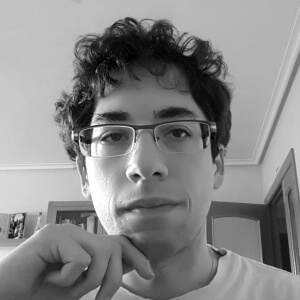Autosuggestion Techniques


Reviewed and approved by the psychologist Sergio De Dios González
Autosuggestion techniques are also known as self-hypnosis techniques. They’re ways of influencing our thoughts and behaviors. Their objective is to modify or channel emotions, reflections, and behaviors, with the idea of producing a positive transformation.
The pioneer of these methods was Émile Coué, a 19th-century pharmacist. He noted an interesting fact regarding those who came to him for medicines. He found that if he spoke positively about the drugs he gave them, they became more effective. In essence, he discovered the placebo effect.
Coué became so interested in the subject, he started to investigate hypnosis. He discovered that no person could be hypnotized against their will. He also found that the impact of this decreases upon regaining consciousness. Due to this fact, he felt inclined to design another procedure that was more efficient. This is how autosuggestion was born.
“In effect, autosuggestion is an instrument that we possess at birth, and in this instrument or rather, in this force, resides a marvelous and incalculable power, which according to circumstances, produces the best or worst results… It is a method which everyone should follow, the sick to obtain healing, the healthy to prevent the coming of disease in the future. By its practice we can insure for ourselves, all our lives long, an excellent state of health.”
-Émile Coué-
Autosuggestion techniques
The autosuggestion techniques used in the therapeutic framework are methods of self-inducing positive thoughts. In effect, they guide behavior and emotions toward well-being. Motivating affirmations are used, as well as imaginative visualizations, oriented to the intended objective.
As a rule, when we talk about such techniques we do so in a positive sense, in terms of increasing well-being. However, there’s also negative autosuggestion. This involves an individual’s self-induced pessimistic or debilitating ideas about their behavior.
Émile Coué was the first to develop a basic process governed by four principles. They were as follows:
- “If it is the unconscious that guides us, and we learn to guide it, then we learn to guide ourselves”.
- “Contrary to what is thought, the will is not the first faculty of man, but the imagination “.
- “Every day, in every way, I am getting better and better.” This is considered to be an extremely powerful affirmation. It calls for continuous practice of autosuggestion so that its effects can be seen.
- “Every idea that we have in the spirit becomes a reality in the domain of possibility”.This means that, if improvement in something is possible, we can achieve it through autosuggestion. If we don’t achieve it, it still increases our well-being.

Main autosuggestion techniques
Behind the idea of autosuggestion, lie two basic ideas: self-affirmation and visualization. Many variants have been built from these two concepts. They both lie at the heart of this practice.
Self-affirmations
Self-affirmations are phrases or sentences that have enough power to motivate you so you don’t lose sight of your goals. However, they must be more influential than any possible obstacles or difficulties that lie in your way. You should repeat them constantly, especially in difficult moments. They consist of statements such as: “I’m capable”, “I can do it” and “I’ll be fine”.
Visualization
Visualization is one of the best-known methods of autosuggestion. To put it into practice, follow the steps below:
- Sit in a quiet place and adopt a comfortable position.
- Close your eyes and breathe deeply, until you feel relaxed.
- Focus your attention on one of the general or specific self-affirmations. For example, “I can” (general statement) or “I can pass the test” (specific statement).
- Begin to build a mental image in which you’ve achieved your objective. Add as many details as possible, until you’ve put together a complete mental scenario.

The efficacy of autosuggestion
Autosuggestion tactics work in a similar way to the placebo effect. They’re extremely effective. However, we must take into account the first principle of Émile Coué which is realism. No matter how well you apply the method, it won’t lead to you achieving the impossible. For example, autosuggestion can’t make you invisible.
It’s also really important to practice these techniques continuously. Repetition generates autosuggestion. Otherwise, its effectiveness may be markedly reduced.
Autosuggestion techniques are also known as self-hypnosis techniques. They’re ways of influencing our thoughts and behaviors. Their objective is to modify or channel emotions, reflections, and behaviors, with the idea of producing a positive transformation.
The pioneer of these methods was Émile Coué, a 19th-century pharmacist. He noted an interesting fact regarding those who came to him for medicines. He found that if he spoke positively about the drugs he gave them, they became more effective. In essence, he discovered the placebo effect.
Coué became so interested in the subject, he started to investigate hypnosis. He discovered that no person could be hypnotized against their will. He also found that the impact of this decreases upon regaining consciousness. Due to this fact, he felt inclined to design another procedure that was more efficient. This is how autosuggestion was born.
“In effect, autosuggestion is an instrument that we possess at birth, and in this instrument or rather, in this force, resides a marvelous and incalculable power, which according to circumstances, produces the best or worst results… It is a method which everyone should follow, the sick to obtain healing, the healthy to prevent the coming of disease in the future. By its practice we can insure for ourselves, all our lives long, an excellent state of health.”
-Émile Coué-
Autosuggestion techniques
The autosuggestion techniques used in the therapeutic framework are methods of self-inducing positive thoughts. In effect, they guide behavior and emotions toward well-being. Motivating affirmations are used, as well as imaginative visualizations, oriented to the intended objective.
As a rule, when we talk about such techniques we do so in a positive sense, in terms of increasing well-being. However, there’s also negative autosuggestion. This involves an individual’s self-induced pessimistic or debilitating ideas about their behavior.
Émile Coué was the first to develop a basic process governed by four principles. They were as follows:
- “If it is the unconscious that guides us, and we learn to guide it, then we learn to guide ourselves”.
- “Contrary to what is thought, the will is not the first faculty of man, but the imagination “.
- “Every day, in every way, I am getting better and better.” This is considered to be an extremely powerful affirmation. It calls for continuous practice of autosuggestion so that its effects can be seen.
- “Every idea that we have in the spirit becomes a reality in the domain of possibility”.This means that, if improvement in something is possible, we can achieve it through autosuggestion. If we don’t achieve it, it still increases our well-being.

Main autosuggestion techniques
Behind the idea of autosuggestion, lie two basic ideas: self-affirmation and visualization. Many variants have been built from these two concepts. They both lie at the heart of this practice.
Self-affirmations
Self-affirmations are phrases or sentences that have enough power to motivate you so you don’t lose sight of your goals. However, they must be more influential than any possible obstacles or difficulties that lie in your way. You should repeat them constantly, especially in difficult moments. They consist of statements such as: “I’m capable”, “I can do it” and “I’ll be fine”.
Visualization
Visualization is one of the best-known methods of autosuggestion. To put it into practice, follow the steps below:
- Sit in a quiet place and adopt a comfortable position.
- Close your eyes and breathe deeply, until you feel relaxed.
- Focus your attention on one of the general or specific self-affirmations. For example, “I can” (general statement) or “I can pass the test” (specific statement).
- Begin to build a mental image in which you’ve achieved your objective. Add as many details as possible, until you’ve put together a complete mental scenario.

The efficacy of autosuggestion
Autosuggestion tactics work in a similar way to the placebo effect. They’re extremely effective. However, we must take into account the first principle of Émile Coué which is realism. No matter how well you apply the method, it won’t lead to you achieving the impossible. For example, autosuggestion can’t make you invisible.
It’s also really important to practice these techniques continuously. Repetition generates autosuggestion. Otherwise, its effectiveness may be markedly reduced.
All cited sources were thoroughly reviewed by our team to ensure their quality, reliability, currency, and validity. The bibliography of this article was considered reliable and of academic or scientific accuracy.
- Blez, R. N. F., & Rodríguez, A. J. S. (2011). Consideraciones teóricas sobre el autoentrenamiento (original). Olimpia: Publicación científica de la facultad de cultura física de la Universidad de Granma, 8(28), 202-206.
- Feixa, C. (2006). La imaginación autobiográfica. Periferia: revista de recerca i formación en antropología, (5).
- Westphal, C., & Laxenaire, M. (2012, February). Émile Coué: amuseur ou précurseur? In Annales Médico-psychologiques, revue psychiatrique (Vol. 170, No. 1, pp. 36-38). Elsevier Masson.
This text is provided for informational purposes only and does not replace consultation with a professional. If in doubt, consult your specialist.







